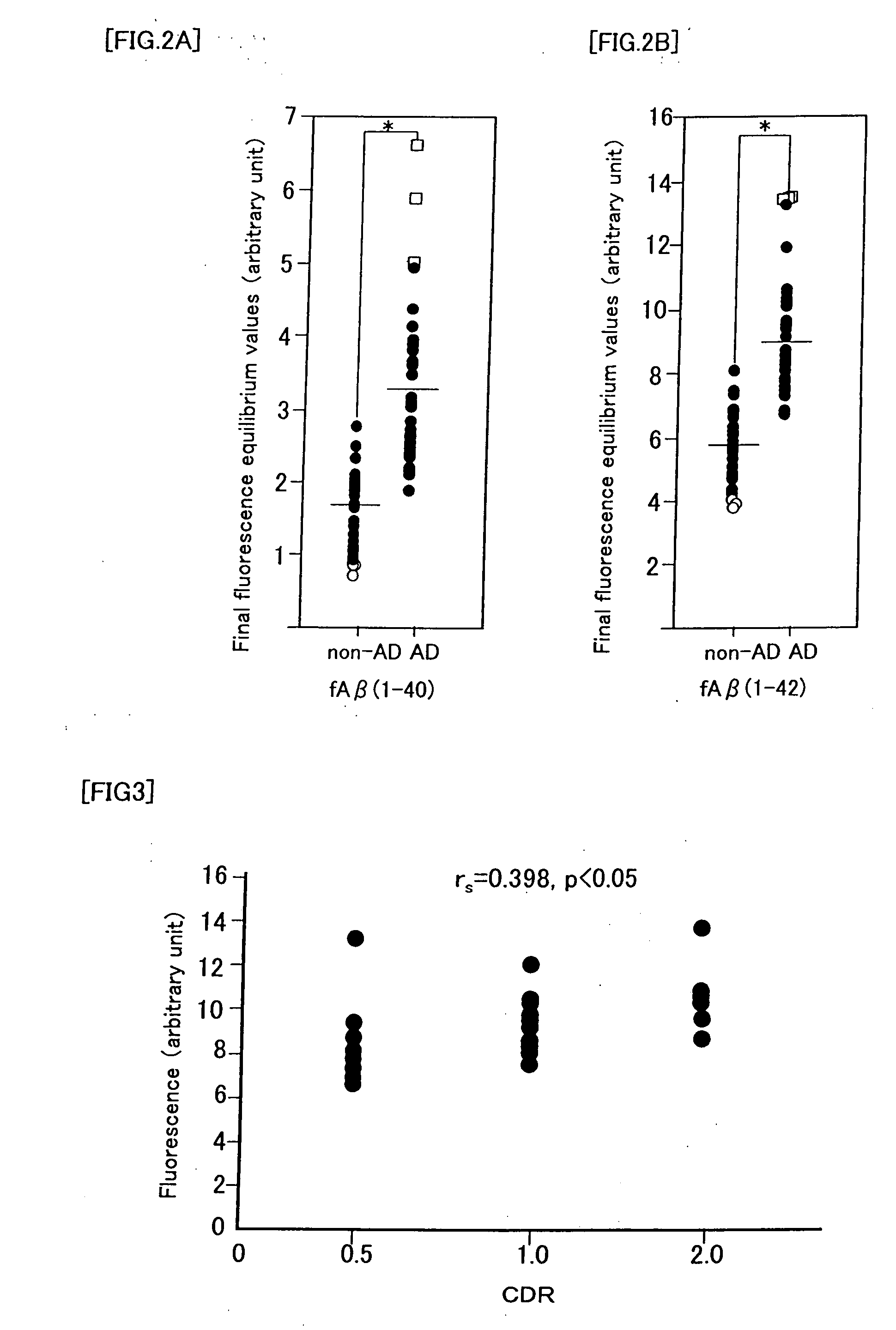Alzheimer's Disease Examination Method
a technology for alzheimer's disease and examination methods, applied in the field of alzheimer's disease examination methods, can solve the problems of inability to accurately examine dementia, inability to satisfy both the diagnostic precision and the specificity of alzheimer's disease by itself, and inability to examine alzheimer's disease with accuracy, so as to achieve less burden on the examiner
- Summary
- Abstract
- Description
- Claims
- Application Information
AI Technical Summary
Benefits of technology
Problems solved by technology
Method used
Image
Examples
example
[0042]A concrete example to which the present invention is applied will be described herein below based on experimental results. Incidentally, the present invention is not limited to the following example.
[0043]In the present example, experiments were conducted using cerebrospinal fluids (CSFs) obtained from both Alzheimer's disease patients and non-Alzheimer's disease patients. Furthermore, studies were made on the correlation between the clinical dementia rating (CDR) and the degree of formation of β-amyloid fibrils.
[0044]Twenty-two Japanese females and 18 Japanese males (age: 60 to 86, median age: 71.7) were examined as Alzheimer's disease patients. Incidentally, these patients satisfied the criteria of Diagnostic and Statistical Manual-IV and the criteria of NINCDS-ADRDA published by McKhann et al. (1984). Patients with the genetic-linkage were excluded. Patients with mild cognitive impairment (CDR=0.5) were included when they later satisfied the criteria after progression.
[0045...
PUM
 Login to View More
Login to View More Abstract
Description
Claims
Application Information
 Login to View More
Login to View More - R&D
- Intellectual Property
- Life Sciences
- Materials
- Tech Scout
- Unparalleled Data Quality
- Higher Quality Content
- 60% Fewer Hallucinations
Browse by: Latest US Patents, China's latest patents, Technical Efficacy Thesaurus, Application Domain, Technology Topic, Popular Technical Reports.
© 2025 PatSnap. All rights reserved.Legal|Privacy policy|Modern Slavery Act Transparency Statement|Sitemap|About US| Contact US: help@patsnap.com



